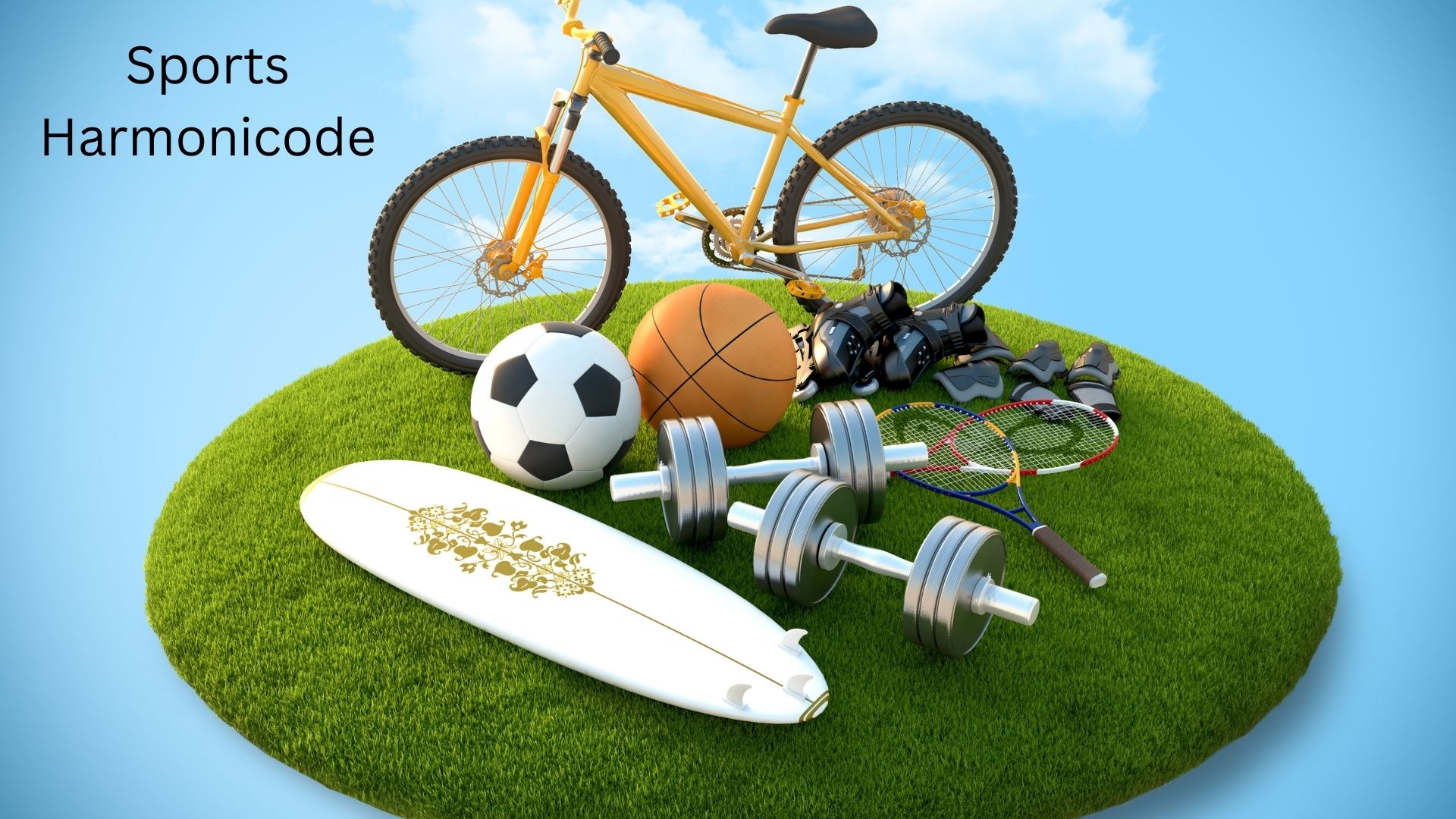Athletic performance has always been a fascinating mix of science, training, and human willpower. In recent years, a new approach called Sports Harmonicode has been gaining attention among athletes, coaches, and sports scientists. This isn’t just another fad it represents a structured way of decoding and optimizing the human body for peak performance.
From professional athletes chasing world records to everyday players trying to push their limits, harmonicode sports methods promise a new path forward. Let’s dive deep into what this system is, how it works, and why it might be shaping the next era in competitive athletics.
What Exactly Is Sports Harmonicode?
At its core, Sports Harmonicode is a system that applies harmony and coding principles to athletic performance. Think of it as translating the body’s movements, rhythms, and energy outputs into measurable codes. These codes then allow athletes to adjust, balance, and fine-tune their performance in a way that traditional training often misses.
The concept began with sports scientists exploring how neurological signals, biomechanics, and muscle harmony interact. Instead of focusing only on strength or endurance, Harmonicode brings together physical, mental, and even emotional components of performance.
In simple terms: Harmonicode is about finding the “perfect rhythm” between body and mind, then coding that rhythm into repeatable training routines.
How Sports Harmonicode Works
So, how does a harmonicode sport session look in practice? Here’s a step-by-step breakdown:
- Data Capture – Athletes wear sensors or use monitoring tools that track heart rate, muscle contractions, brainwave activity, and movement efficiency.
- Coding & Analysis – The data is converted into harmonic codes, revealing strengths, weaknesses, and imbalances.
- Training Adjustments – Coaches and athletes apply the codes to modify drills, improve recovery, or enhance concentration techniques.
- Feedback Loop – Athletes train with these adjustments, and the system continuously measures and updates their performance codes.
This process allows athletes to operate in their optimal performance zone. For example, a runner might discover that her stride rhythm syncs best when her breathing rate follows a harmonic pattern identified by the system.
The Science Behind Sports Harmonicode
The success of team harmonicode training is built on three scientific pillars:
- Biomechanics: Understanding how the body moves and how to create efficient patterns.
- Neuroplasticity: Training the brain to adapt quickly, reinforcing positive performance habits.
- Biofeedback: Using real-time data to adjust effort, breathing, and focus.
Recent studies in sports science journals highlight the connection between harmonic resonance in the nervous system and athletic performance. When the body’s internal systems align in rhythm, athletes experience improved stamina, quicker recovery, and sharper mental focus.
Dr. Elena Novak, a leading performance researcher, explains:
“The future of elite sports lies not just in muscles or nutrition, but in the synchronization of physiological signals. That’s exactly what Sports Harmonicode is tapping into.”
Key Benefits for Athletes
Athletes adopting harmonicode sports methods report a range of benefits:
- Enhanced Endurance: Balanced energy output means athletes last longer without fatigue spikes.
- Improved Focus: Harmonic coding trains the mind to stay in the zone under pressure.
- Faster Recovery: Real-time feedback helps prevent overtraining and accelerates healing.
- Reduced Injury Risk: Identifying biomechanical imbalances early avoids stress injuries.
Case Study: Elite Sprinters
A European sprinting team tested Sports Harmonicode protocols during a training camp. Within six weeks:
- Average sprint times dropped by 2.4%,
- Recovery between heats improved by 15%,
- Muscle injury rates reduced by 30%.
The data showed clear performance gains not only in physical metrics but also in athletes’ psychological resilience.
Devices and Tools Used in Sports Harmonicode
This field wouldn’t exist without technology. Common tools include:
| Device/Tool | Purpose | Example Use Case |
|---|---|---|
| Wearable sensors | Track heart rate, muscle activity, motion | Running stride analysis |
| Neurofeedback headsets | Monitor brainwaves and concentration levels | Focus training before competitions |
| Smart apps & dashboards | Convert raw data into harmonic codes | Coaches adjusting team drills |
| VR/AR training systems | Immersive visualization of harmonic movement patterns | Simulated game situations |
The integration of these devices allows harmonicode sport practitioners to train smarter, not just harder.
Real-World Applications
Sports Harmonicode isn’t theoretical anymore it’s already being used in real scenarios:
- Soccer Clubs in Europe: Teams integrate harmonic codes into recovery sessions after matches.
- Olympic Swimmers: Swimmers use harmonic breathing techniques to improve underwater efficiency.
- Tennis Players: Tracking harmonic codes for shot rhythm and focus during long matches.
- Esports Teams: Surprisingly, even competitive gamers are applying harmonicode principles for sharper reflexes.
This versatility shows that team harmonicode training isn’t just limited to physical sports it applies wherever precision, focus, and rhythm matter.
Who Can Benefit from Sports Harmonicode?
It’s easy to think this is just for elite athletes, but that’s not the case. Different groups can benefit:
- Professional Athletes: Fine-tuning peak performance and staying injury-free.
- Amateur & Recreational Players: Learning efficient movement early on to avoid bad habits.
- Coaches: Using harmonic codes to design better training sessions.
- Rehabilitation Specialists: Applying harmonic codes for faster, safer recovery.
Even corporate wellness programs are exploring harmonicode sports techniques for stress management and focus training.
Current Adoption in Sports Organizations
Several organizations are experimenting with this system:
- FC Barcelona (Football) – Testing harmonic training modules in youth academies.
- USA Track & Field – Piloting harmonicode data analysis in Olympic trials.
- Japan Swimming Federation – Using harmonic breathing synchronization with swimmers.
Though not yet mainstream, adoption is accelerating. Coaches are realizing that unlocking a harmonicode sport profile can reveal performance insights impossible to see with the naked eye.
Scientific Validation and Criticism
No breakthrough escapes scrutiny. While many scientists support Harmonicode’s foundation, skeptics argue:
- Some studies lack large sample sizes.
- Results vary significantly depending on the athlete’s baseline.
- Long-term effects are still being researched.
Still, pilot studies and early data suggest strong evidence for real-world effectiveness. The main debate isn’t whether it works, but how broadly it can be applied.
Limitations and Challenges
Like any innovation, Sports Harmonicode faces hurdles:
- Cost – High-end sensors and analysis tools remain expensive.
- Accessibility – Smaller clubs and individual athletes may struggle to access programs.
- Knowledge Gap – Many coaches aren’t yet trained in harmonicode methods.
- Ethics – Is it fair if one team uses Harmonicode and another doesn’t?
These challenges need solutions before Harmonicode can become a universal part of athletic training.
How to Get Started with Sports Harmonicode
For athletes or coaches interested in exploring team harmonicode systems, here’s a roadmap:
- Initial Assessment – Use wearables to capture baseline performance data.
- Find a Specialist – Work with a coach or physiologist trained in harmonicode methods.
- Pilot Program – Apply Harmonicode principles to one training area (e.g., breathing or stride analysis).
- Review & Adjust – Track improvements, refine codes, and expand to other areas.
Cost Breakdown (Average for Entry-Level Setup)
| Item | Approximate Cost |
|---|---|
| Wearable sensor package | $200–$600 |
| Neurofeedback headset | $400–$800 |
| Training app subscription | $20–$50/month |
| Specialist consultation | $100–$200/hour |
While not cheap, the investment can be game-changing for athletes serious about performance.
Future of Sports Harmonicode
Looking ahead, the field is poised for rapid growth. Some expected trends include:
- AI Integration – Smarter systems that adapt codes automatically in real-time.
- Virtual Reality – Immersive harmonic training environments.
- Mainstream Adoption – From high schools to recreational leagues.
- Holistic Health – Expansion beyond sports into corporate wellness and healthcare.
Experts believe that within a decade, harmonicode sports may become as common as nutrition plans or strength training.
Conclusion
Sports Harmonicode represents a turning point in how we think about athletic performance. Instead of focusing only on muscle or stamina, it captures the full rhythm of the athlete body, mind, and energy working in harmony.

Johan is an professional & experienced blogger passionate about language and writing on Grammar root. He shares his expertise in grammar, punctuation, and effective communication, making complex rules simple and accessible for readers. With a knack for clear explanations and engaging content, Steel aims to help others master the art of language.

